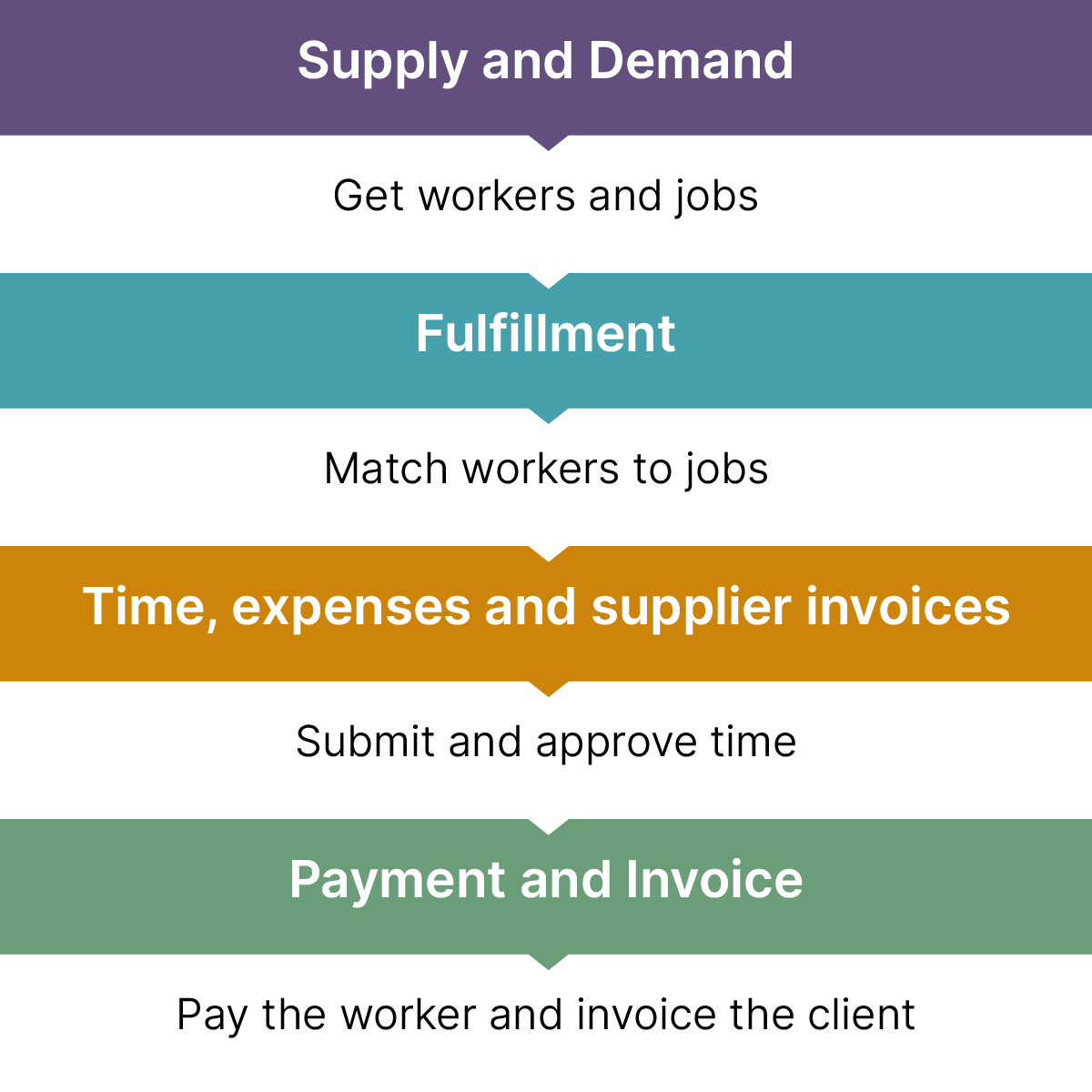

Making hard work easier
Workrise is a tech-enabled workforce management network that has revolutionized the energy sector by matching companies with workers. Need a field engineer for a new solar farm? How about maintenance crew for a traditional power plant? Workrise has it covered.
But like many cutting-edge scale-ups, Workrise faced some road bumps in its path to growth. For instance, one consequence of its rapid growth was that organizational silos began to emerge. Creating a new feature required the involvement of multiple departments and teams before release — and that impacted time-to-market. Other bottlenecks included increased cognitive load for dev teams, a lack of domain focus and misalignment between technology and the business.
As an agile enterprise, Workrise wanted a partner capable of turbo-charging their autonomous-team building efforts, and one that was aligned to their beliefs. That’s why they turned to the experts. Thoughtworks was brought in to assess, guide and re-engineer their software-development lifecycle best practices, including their methodologies, processes, CI/CD tools and documentation to provide a seamless and frictionless developer experience.
Together, we set out to make it easier, faster and safer to do business in the energy sector.
Starting with Thoughtworks’ organizational assessment framework
To kick things off, Thoughtworks put together a product engineering team and conducted an eight-week product and engineering review using the X-act framework — an assessment, evaluation and remediation framework for enterprise systems and organizational structures. That team looked at all aspects of software engineering, product design, operational efficiency and cloud.
Three key findings were revealed:
1.) There was a communication gap between engineering teams and the business
2.) Greater autonomy could enable teams to be more effective
3.) Current structures resulted in a high cognitive load for teams, creating bottlenecks, decreased engineering effectiveness and time was being wasted in unnecessary meetings
Based on the above findings, Thoughtworks and Workrise launched two parallel efforts: developing and implementing a tech strategy to provide agreed guardrails that would enable teams to operate autonomously; and the creation of an automated invoicing system, using a thin-slice approach, to demonstrate the effectiveness of a domain-focused approach.
At the start of our engagement, Workrise was operating in two primary verticals, with the development teams split between them, which created a few challenges.
Challenges

Siloed and tribal knowledge made onboarding developers and applying consistent architectural principles difficult

Intra-team dependencies on shared systems and capabilities caused frustration and productivity friction

Bifurcation and unintentional redundancies between the verticals due to a lack of visibility and oversight

Domain-driven design and a new tech strategy
To address these challenges, Thoughtworks supported Workrise in developing solutions that foster team autonomy, minimize dependencies and maximize reuse of core business capabilities through domain-driven design. The journey follows a time-tested path consisting of several specialized collaborative sessions across a cross-section of stakeholders.
We started by conducting a Business Model Canvas in order to document the current business and to also build a shared understanding around the nuances of Workrise’s business model. Next, a Wardley-Mapping session helped identify the users’ journey, pinpointing which parts of that journey were created in-house or outsourced. Finally, we conducted an Event-Storming exercise to identify the different bounded contexts within the Workrise business and drawing boundaries within each context. Instead of using the original industry vertical approach, domains were created based on the business activities overlayed with the departments operating in those activities — this helped visualize the domains and how they interact. This exercise enabled Workrise’s key stakeholders to get on the same page and think about reorganization from a product and engineering perspective.
Proving the tech strategy through automated invoicing
To build support for this approach, we needed to show the value to the business at the earliest opportunity. Here, our thin-slice approach focused explicitly on invoicing. To maintain flexibility over client invoice delivery, the Finance Operations department had ended up with a glut of manual processes needed to create and split invoices before sending them out. Many of those clients had their own invoicing preferences, and as a result, there were no standard invoicing guidelines This meant a bespoke and heavily manual process which wasn’t scalable. They needed to add headcount to support the growth of their client portfolio.
Thoughtworks collaborated with several Workrise teams to automate invoice splitting. Through this project, we’ve developed a capability that curtails the number of invoices requiring manual adjustments, minimizing the number of involuntary errors and improving the Finance Operations throughput and team experience. It also demonstrated the effectiveness of the new domains and tech strategy.
As part of the engagement, the Thoughtworks team was asked to deliver product functionality within a core domain. The functionality that was successfully delivered was valuable, but I believe the greater value was generated by how the team delivered the functionality. The team established ways of working with stakeholders and communicating progress and expectations, bringing much-needed structure to the domain. These practices have since begun to spread to other domain teams. This paradigm shift that Thoughtworks has led is where the true value of the engagement is, and Workrise will continue to see the benefits for many years to come.
Promising early results
While it’s still early in our engagement, the results from our thin-slice invoicing system built on Google Cloud are promising. However, the more significant business outcome is the realignment of the engineering and business teams. Since we were able to develop a technical strategy, establish autonomous teams, decouple deliveries and develop architectural principles, the domain teams are empowered to deliver tangible value more quickly. In addition, Workrise can bring technology closer to their business, meaning they can provide better products since there’s a better understanding of the business processes.
Finally, Workrise can continue crafting a better engineering culture as teams have the autonomy to choose the solutions they create instead of handing down proposed solutions.


















